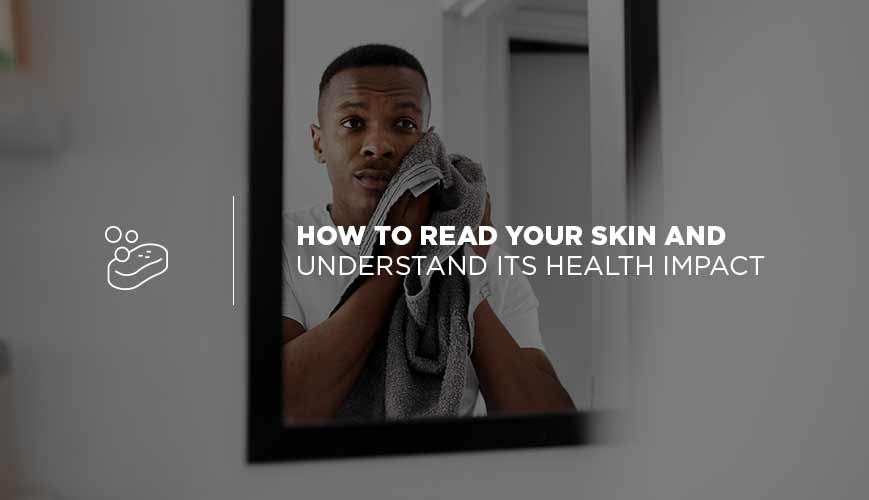How to Read Your Skin and Understand Its Health Impact
By Dr. Molly Casey

There are so many topics in health and wellness to go over. It can often feel like the list is endless, especially with the obvious topics -- weight management, blood pressure, cholesterol levels, and heart health. Then some take it a bit deeper with thyroid, liver, gall bladder and adrenal health. Very rarely do I see folks engaging with the body’s largest organ and the role it plays in your health, the skin. Today, let’s take a look.
Anatomy
The skin consists of two main layers, the epidermis, which is a thinner external layer and dermis, an internal thicker layer. The skin has three main functions: protection, regulation and sensation.
A few fun facts:
- One body’s skin covers 21 square feet and weighs nine pounds
- There are approximately 11 miles of blood vessels in the skin
- The skin is thickest on your feet and thinnest on the eyelids
- It renews itself every 28 days
- It communicates with the brain via receptors that intake stimuli from the outside world, and communicates via nerves to the brain so it can process and direct a response.
- At least five different types of receptors exist for pain and touch, but some travel at faster speeds (heat and pain)
- Changes in the skin can indicate changes in health
Protection - The skin acts as a barrier of protection from the outside world. It not only protects against mechanical forces or falls, hot and cold temperatures, sun rays, organisms -- viruses, bacteria, radiation and other chemicals. The skin is your first line of defense and immunity.
Regulation - The skin also regulates your body temperature. It does this through the mechanism of sweating, the presence or lack thereof of hair, peripheral circulation, and even in the fluid makeup or balance of the sweat. I include detoxification under the category of regulation. The skin is your largest organ of detoxification and is porous; through those pores, and sweat, the body releases wastes and chemicals that no longer serve your body.
Sensation - The skin houses all sorts of nerve endings, cells, and receptors. These help your body communicate with the brain. They detect and carry information regarding all sorts of changes in the environment on, in, and around the body.
Your Skin
Your skin is a window to your health. It is not the only window, but it is a window that offers protection, regulation, detoxification, and communication with your brain; it’s an interface. When the skin appears in a certain condition, it can be telling to your overall health. For instance, rashes can be indicative of autoimmune diseases or liver issues. Commonly known changes in freckles or moles can be indicative of types of skin cancer. Changes of hardness or dryness of skin can indicate issues with blood pressure and or kidney problems. This certainly is not a detailed list but the health of your skin matters. By paying attention, you can see more than you think.
Taking Care of Your Skin
Your skin is full of nerve endings, cells and receptors. The skin plays a major role in your communication with the environment. Making sure your nervous system is functioning and communicating as well as possible is a great start to giving your skin what it needs to be the healthiest possible.
Another healthy habit for skincare is to drink half your body weight in ounces of clean water. Every cell of your body requires water. The better hydrated your body is, the better the skin can do its job to detoxify. Chronic dehydration will inhibit the skin’s ability to do its job.
Be mindful about the chemicals you put on your skin. It is porous and absorbs from the outside in -- the opposite of sweating (I’ll write more about this in an article to come).
Lastly, pay attention and look at your skin regularly. You can’t see your heart. You can see your skin. Know what your skin normally looks like and check it regularly. If you notice differences that you question, or notice something that’s alarming, get them checked; remember it is a window to your health!
The information, including but not limited to, text, graphics, images and other material contained on this page are for informational purposes only. The purpose of this post is to promote broad consumer understanding and knowledge of various health topics, including but not limited to the benefits of chiropractic care, exercise and nutrition. It is not intended to provide or be a substitute for professional medical advice, diagnosis or treatment. Always seek the advice of your chiropractor, physician or other qualified health care provider with any questions you may have regarding a medical condition or treatment and before undertaking a new health care regimen, and never disregard professional medical advice or delay in seeking it because of something you have read on this page.